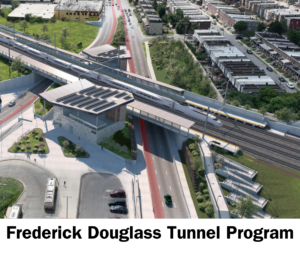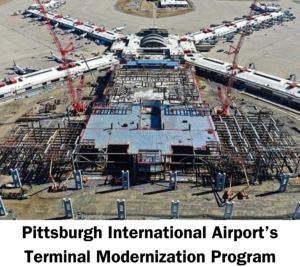Union Labor Builds the Future Through the Bipartisan Infrastructure Law
The Bipartisan Infrastructure Law (BIL) funding, a cornerstone of the Biden-Harris Administration’s Build Back Better Plan, represents a historic $1.2 trillion investment that is supporting critical projects in our communities. These projects enhance infrastructure, including roads, bridges, and public buildings, while boosting local economies and improving overall quality of life.
Opportunities for Developers and Architects
Given the billions of dollars allocated to various high-profile projects, the BIL offers developers and architects a wide range of opportunities. Engaging in these significant developments allows developers to demonstrate leadership in advancing policy goals and contributing to economic growth. These projects boost public standing and gain favor among voters by creating jobs and sustaining local economies. By being part of this transformative initiative, developers and architects can leave a legacy of growth, innovation, and improved quality of life for generations to come.
Under the law, developers can access a range of incentives designed to support and enhance their involvement, including financial grants and low-interest loans, tax incentives for energy efficiency, streamlined permitting, and improved regulatory flexibility. The law also promotes workforce development through training and apprenticeship programs and offers incentives for clean energy development.
The Role of Unions in Project Success
However, to execute these projects effectively, unions—like the Eastern Atlantic States Regional Council of Carpenters (EAS Carpenters Union)—offer a highly skilled and reliable workforce capable of delivering the quality and efficiency needed for large-scale infrastructure projects. Partnering with unions increases the likelihood of project success through the expertise and experience that skilled union members bring to the table.
To date, $461 billion in funding has been announced for over 60,000 projects. In the EAS Carpenters
Union region alone, several BIL-funded initiatives are enhancing infrastructure and significant
ly increasing working hours for union members, some of which include the following:
- Enstructure Edgemore Port Expansion project in Delaware – Backed by a $50 millionfederal grant from the BIL, the expansion will significantly boost the capacity of the Port of Wilmington and gen
 erate numerous job opportunities;
erate numerous job opportunities;
- Frederick Douglass Tunnel Program in Maryland – This project will replace the oldest tunnel along the Northeast Corridor and alleviate the most significant rail bottleneck between Washington, D.C., and Pennsylvania;
- The Hudson River Tunnel Project in New Jersey aims to construct a new tunnel and related railroad infrastructure for Amtrak and NJ Transit trains under the Hudson River while the existing tunnel is rehabilitated to create four tracks between New Jersey and New York;
- Pittsburgh International Airport’s Terminal Modernization Program in Pennsylvania is expected to create more than 7,800 direct temporary design and construction jobs;
- Long Bridge Project in Virginia to increase rail capacity over the Potomac River; and
- H Street Bridge NE Replacement in Washington, D.C. – The project will reconstruct the bridge and enable private-public investment in the market’s most significant transportation hub.
Lasting Impact and Sustainable Success
By tapping into BIL-supported projects, developers can contribute to lasting, impactful infrastructure improvements that benefit their communities while ensuring long-term, profitable engagements. Partnering with unions further ensures that projects are staffed with skilled, reliable labor, enhancing these endeavors’ overall success and sustainability.

 ">
">
